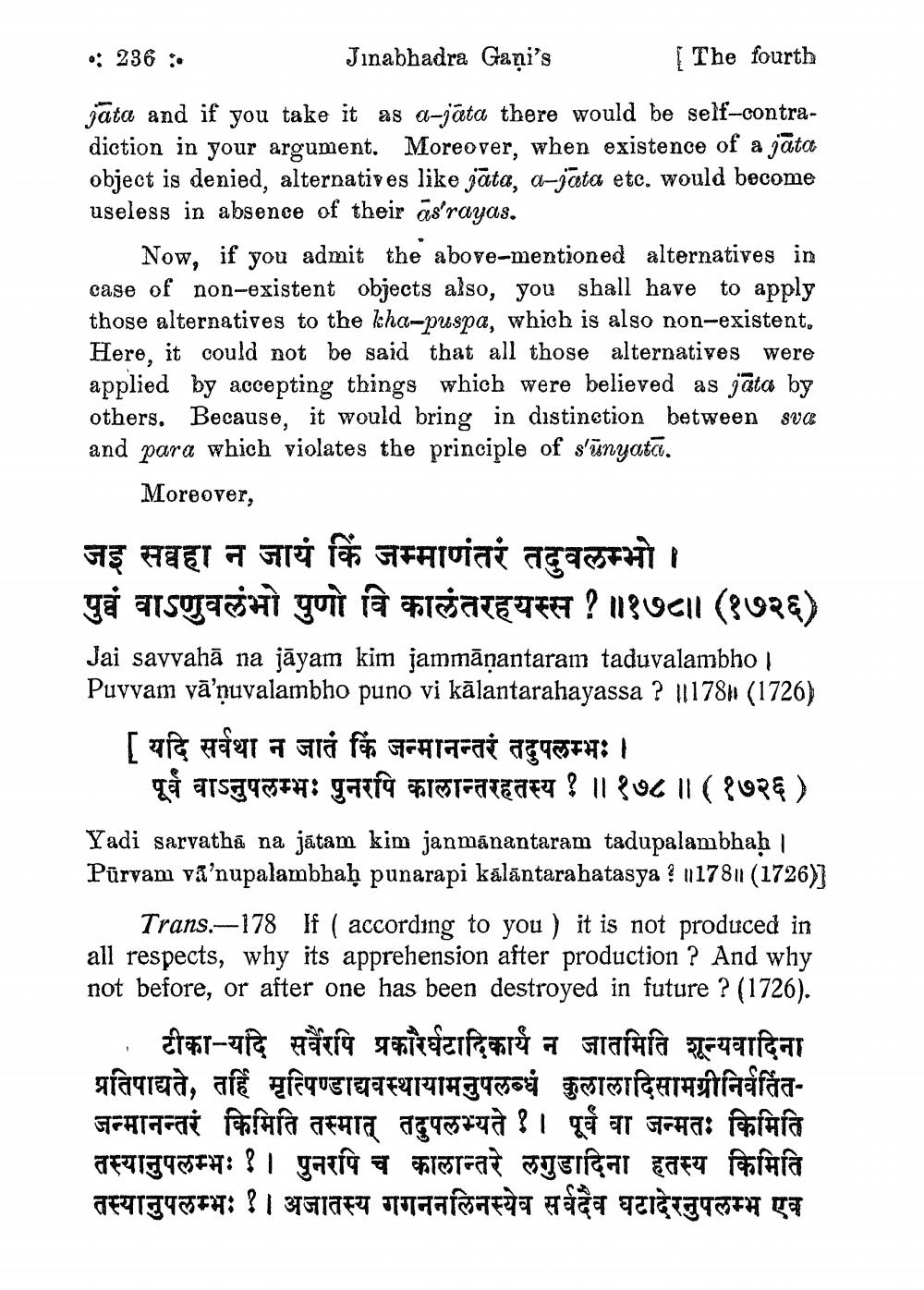________________
.: 236 :
Jinabhadra Gani's
The fourth
jata and if you take it as a-jata there would be self-contradiction in your argument. Moreover, when existence of a jāta object is denied, alternatives like jāta, a-jata etc. would become useless in absence of their as'rayas.
Now, if you admit the above-mentioned alternatives in case of non-existent objects also, you shall have to apply those alternatives to the kha-puspa, which is also non-existent, Here, it could not be said that all those alternatives were applied by accepting things which were believed as jäta by others. Because, it would bring in distinction between svo and para which violates the principle of s'ūnyata.
Moreover,
जइ सबहा न जायं किं जम्माणंतरं तदुवलम्भो । पुवं वाऽणुवलंभो पुणो वि कालंतरहयस्स? ॥१७८॥ (१७२६) Jai sayvahā na jāyam kim jammānantaram taduvalambho Puyvam vā'nuvalambho puno vi kālantarahayassa ? 11178N (1726) [ यदि सर्वथा न जातं किं जन्मानन्तरं तदुपलम्भः ।
पूर्व वाऽनुपलम्भः पुनरपि कालान्तरहतस्य ? ॥१७८ ।। (१७२६) Yadi sarvathā na jātam kim janmānantaram tadupalambhah | Pūrvam va’nupalambhaḥ punarapi kālāntarahatasya ? 117811 (1726)]
Trans.-178 If ( according to you ) it is not produced in all respects, why its apprehension after production ? And why not before, or after one has been destroyed in future ? (1726).
. टीका-यदि सर्वैरपि प्रकारघंटादिकार्य न जातमिति शून्यवादिना प्रतिपाद्यते, तर्हि मृत्पिण्डाद्यवस्थायामनुपलब्धं कुलालादिसामग्रीनिवर्तितजन्मानन्तरं किमिति तस्मात् तदुपलभ्यते । पूर्व वा जन्मतः किमिति तस्यानुपलम्भः १ । पुनरपि च कालान्तरे लगुडादिना हतस्य किमिति तस्यानुपलम्भः ?। अजातस्य गगननलिनस्येव सर्वदैव घटादेरनुपलम्भ एव




